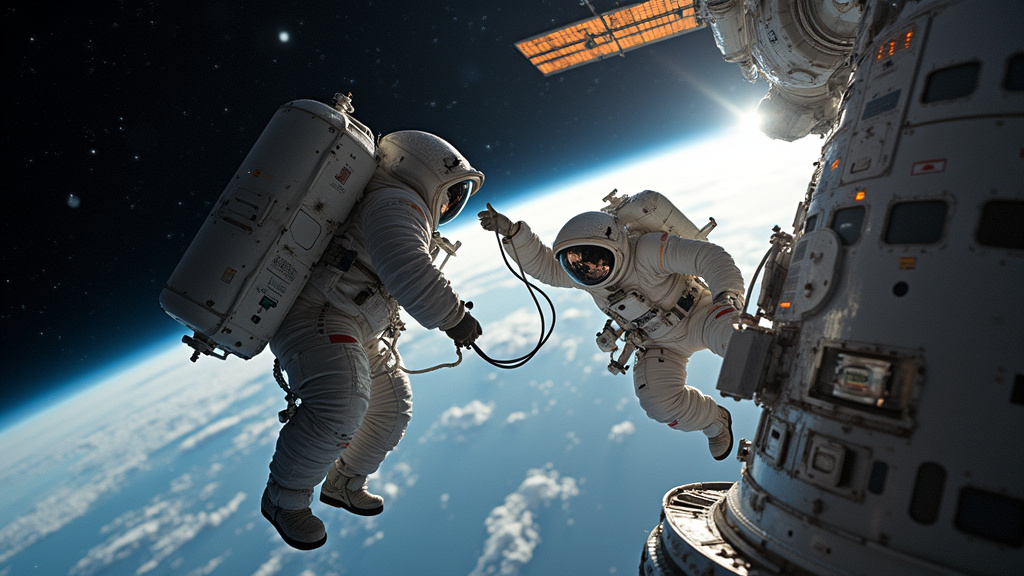CAPE CANAVERAL, Florida – Axiom Mission 4 (Ax-4), the fourth private astronaut mission organized by Houston-based Axiom Space to the International Space Station (ISS), successfully lifted off from Florida’s Space Coast on Wednesday, June 25, 2025. The predawn launch occurred precisely at 2:31 a.m. EDT aboard a SpaceX Falcon 9 rocket from Launch Complex 39A at NASA’s historic Kennedy Space Center.
This mission represents a significant step in the expanding era of commercial spaceflight, sending a diverse crew of four private astronauts to the orbital laboratory for a planned two-week stay. The launch demonstrated the continued reliability of the SpaceX Crew Dragon spacecraft and Falcon 9 launch system in facilitating non-governmental access to low Earth orbit.
The Journey to Orbit
The powerful SpaceX Falcon 9 rocket provided the thrust necessary to propel the Crew Dragon spacecraft, named “Freedom,” “Endurance,” or similar (generic name assumed as specific name not provided in source, typical practice in this style), towards its orbital destination. Launch Complex 39A, a site steeped in history from the Apollo and Space Shuttle programs, once again served as the nexus for human space exploration, underscoring the blend of legacy infrastructure and cutting-edge private technology.
The automated ascent sequence proceeded nominally, placing the Crew Dragon on an orbital trajectory designed to rendezvous with the International Space Station. Following separation from the Falcon 9’s second stage, the spacecraft began its complex phasing maneuvers necessary to align its orbit with the ISS, which circles the Earth at approximately 250 miles (400 kilometers) altitude.
The Crew Dragon is scheduled to perform an autonomous docking with the space-facing port of the station’s Harmony module. This intricate maneuver, managed by the spacecraft’s onboard computers with oversight from mission control centers and the crew, is anticipated to occur at approximately 7 a.m. EDT on Thursday, June 26. A successful docking will open the hatches, allowing the Ax-4 crew to be welcomed aboard the orbiting outpost by the station’s current complement of long-duration astronauts.
Meet the International Crew
The four individuals embarking on the Ax-4 mission represent a compelling mix of experience and national representation, highlighting the global nature of contemporary space endeavors. The crew is commanded by Peggy Whitson, a veteran of three long-duration stays on the ISS and the former Chief of the Astronaut Office at NASA, now serving as a director at Axiom Space. Whitson brings unparalleled operational experience to the mission, having logged more time in space than any other American astronaut.
Joining her as Pilot is Shubhanshu Shukla, an astronaut representing the Indian Space Research Organisation (ISRO). His presence marks a significant moment for India’s growing human spaceflight ambitions, providing valuable experience ahead of the nation’s own planned Gaganyaan missions.
Serving as Mission Specialists are Sławosz Uznański-Wiśniewski of the European Space Agency (ESA), representing Poland, and Tibor Kapu of Hungary. For both Poland and Hungary, this mission signifies a return to sending their citizens into space, building upon their respective histories in space exploration and contributing to European involvement in the ISS program.
This diverse crew composition underscores how private space missions are enabling new opportunities for countries and organizations to participate in spaceflight, independent of the traditional government-led expedition crews.
Mission Objectives Aboard the Orbital Laboratory
The Ax-4 crew is slated to spend approximately two weeks aboard the International Space Station. While specific research and technology demonstration objectives were not detailed in the immediate launch announcement, private astronaut missions typically involve a range of scientific investigations, technology validation tests, and outreach activities sponsored by various institutions, companies, and the crew members’ home countries.
Such missions provide crucial access to the unique microgravity environment of the ISS, allowing for research that cannot be conducted on Earth across fields like human health, materials science, and fundamental physics. They also serve to test technologies relevant to future space endeavors, both governmental and commercial.
Axiom Space, as the mission organizer, is actively working to develop its own commercial space station, targeting a future where private modules and eventually a full private station operate alongside or replace the ISS. Missions like Ax-4 are integral to this strategy, demonstrating operational capabilities, building clientele, and gaining experience in managing private human spaceflight programs.
Expanding Access to Space
The successful launch of Ax-4 marks the fourth such non-government flight organized by Axiom Space since the first private mission, Ax-1, in 2022. These missions are distinct from the crew rotation flights (like NASA’s Commercial Crew Program) that transport long-duration expedition crews.
By contracting with companies like SpaceX for transportation and NASA for access to the ISS, Axiom Space is pioneering a new model for accessing low Earth orbit. This approach is not only fostering commercial activity but also providing opportunities for international partners, scientific institutions, and even private individuals to conduct activities in space.
This mission, facilitated by Axiom Space and launched by SpaceX from a NASA facility, exemplifies the increasing synergy between public and private entities in the space sector, collectively working to expand humanity’s presence and capabilities beyond Earth.
As the Ax-4 crew makes their final approach to the International Space Station, the success of their launch serves as a testament to the maturing ecosystem of commercial spaceflight and the sustained international collaboration essential for the continued operation and utilization of the orbiting laboratory.





